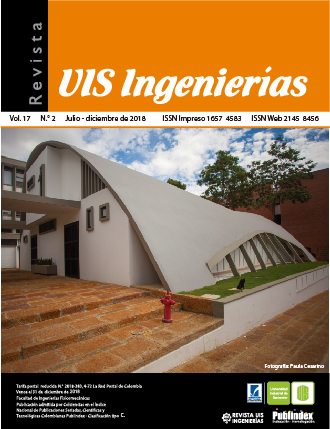Published 2018-06-16
Keywords
- Macro-elements,
- historic structures,
- pushover analysis
How to Cite
Abstract
In this project, a historic masonry building in Sardinia, Italy has been considered as a case study for the comparison of two approaches for modeling, static and seismic analysis. Two software with different modeling approaches were employed with the purpose of comparing and discussing the results. SismiCad12 was used to simulate the structural behavior of the historic masonry building. SismiCad12 uses the Finite Element Method (FEM) that allows to model and analyze most types of 3D structures, and it is suitable for masonry structures. On the other hand, a different and innovative modeling approach called Frame Macro Elements (FME) was also applied using the 3Muri software, specially designed for assessing the linear, nonlinear, and seismic behavior of masonry structures.
Assuming the same hypothesis to construct the 3D model of the structure in each code, the results of the static analysis show a different distribution of the vertical loads in the structure, which are more realistic in the FEM modeling. This different criterion of evaluation of the vertical loads carries a mechanism of "soft floor" in the pushover analysis in the FEM modeling, and therefore, a lower ultimate displacement corresponding to the collapse of the structure. On the other hand, in dynamic analyzes, FME modeling is more receptive to reality, involving a massive percentage of masses participating in the first vibration modes.
Downloads
References
A. Anzani, L. Binda, A. Carpinteri, S. Invernizzi, and G. Lacidogna, “A multilevel approach for the damage assessment of Historic masonry towers,” J. Cult. Herit., vol. 11, no. 4, pp. 459–470, 2010.
C. Casapulla, L. U. Argiento, and A. Maione, “Seismic safety assessment of a masonry building according to Italian Guidelines on Cultural Heritage: simplified mechanical-based approach and pushover analysis,” Bull. Earthq. Eng., pp. 1–29, 2017.
G. Bartoli, M. Betti, and S. Monchetti, “Seismic Risk Assessment of Historic Masonry Towers: Comparison of Four Case Studies,” J. Perform. Constr. Facil., vol. 31, no. 5, pp. 1–16, 2017.
G. Ismagilova, L. Safiullin, and I. Gafurov, “Using Historical Heritage as a Factor in Tourism Development,” Procedia - Soc. Behav. Sci., vol. 188, no. 904, pp. 157–162, 2015.
F. Clementi, V. Gazzani, M. Poiani, and S. Lenci, “Assessment of seismic behaviour of heritage masonry buildings using numerical modelling,” J. Build. Eng., vol. 8, pp. 29–47, 2016.
P. E. Mezrea, I. A. Yilmaz, M. Ispir, E. Binbir, I. E. Bal, and A. Ilki, “External Jacketing of Unreinforced Historical Masonry Piers with Open-Grid Basalt-Reinforced Mortar,” J. Compos. Constr., vol. 21, no. 3, 2017.
A. Ural, F. K. Fırat, Ş. Tuğrulelçi, and M. E. Kara, “Experimental and numerical study on effectiveness of various tie-rod systems in brick arches,” Eng. Struct., vol. 110, pp. 209–221, 2016.
G. Marcari, G. Fabbrocino, and G. Manfredi, “Shear Seismic Capacity of Tuff Masonry Panels in Heritage Constructions,” in Structural Studies, Repairs and Maintenance of Heritage Architecture X, 2007, p. 10.
CEN, Eurocode 6: Design of Masonry Structures. European Union, 2005.
CEN, Eurocode 8: Seismic Design of Buildings - Worked examples. Europea Union, 2012.
S. Lagomarsino, A. Penna, A. Galasco, and S. Cattari, “TREMURI program: An equivalent frame model for the nonlinear seismic analysis of masonry buildings,” Eng. Struct., vol. 56, pp. 1787–1799, 2013.
V. Bosiljkov, D. D’Ayala, and V. Novelli, “Evaluation of uncertainties in determining the seismic vulnerability of historic masonry buildings in Slovenia: use of macro-element and structural element modelling,” Bull. Earthq. Eng., vol. 13, no. 1, pp. 311–329, 2013.
O. C. Zienkiewicz, R. L. Taylor, and D. Fox, “The Finite Element Method for Solid and Structural Mechanics,” in The Finite Element Method for Solid and Structural Mechanics, 2014.
F. Ceroni, S. Sica, M. Rosaria Pecce, and A. Garofano, “Evaluation of the natural vibration frequencies of a historical masonry building accounting for SSI,” Soil Dyn. Earthq. Eng., vol. 64, pp. 95–101, 2014.
A. Asdrúbal, C. Graciano, and O. A. González-Estrada, “Resistencia de vigas esbeltas de acero inoxidable bajo cargas concentradas mediante elementos finitos,” Rev. UIS Ing., vol. 16, no. 2, pp. 61–70, 2017.
A. Di Pietro, Decreto del Ministero delle infrastrutture 14 gennaio 2008 Approvazione delle nuove norme tecniche per le costruzioni, Italy 2008.
A. Di Pietro, Consiglio Superiore dei Lavori Pubblici: Istruzioni per l’applicazione delle “ Norme tecniche per le costruzioni ” di cui al D. M. 14 gennaio 2008. Italy, 2009.
S. Petrovčič and V. Kilar, “Seismic Retrofitting of Historic Masonry Structures with the Use of Base Isolation—Modeling and Analysis Aspects,” Int. J. Archit. Herit., vol. 11, no. 2, pp. 229–246, 2016.
E. Vintzileou, C. Mouzakis, C.-E. Adami, and L. Karapitta, “Seismic behavior of three-leaf stone masonry buildings before and after interventions: Shaking table tests on a two-storey masonry model,” Bull. Earthq. Eng., vol. 13, no. 10, pp. 3107–3133, 2015.
T. Salonikios, C. Karakostas, V. Lekidis, and A. A, “Comparative inelastic pushover analysis of masonry frames,” Eng. Struct., vol. 25, pp. 1515–1523, 2003.

